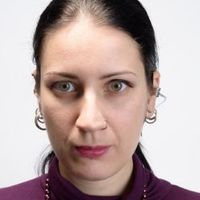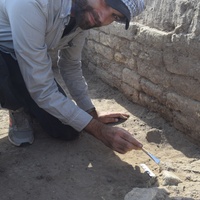
Tiffany Ftaimi
Related Authors
Erika Roboz
Pázmány Péter Catholic University
Albert Dietz
Ludwig-Maximilians-Universität München
Tell Afis Archaeological Mission
Università degli Studi di Firenze (University of Florence)
Dirk Wicke
Goethe-Universität Frankfurt am Main
Marion Meyer
University of Vienna
Guy Bunnens
Université de Liège
Joanna Töyräänvuori
University of Helsinki
Birgül Ögüt
Albert-Ludwigs-Universität Freiburg
Dominik Bonatz
Freie Universität Berlin
InterestsView All (14)









Uploads
Papers by Tiffany Ftaimi
and was depicted in an anthropomorphic form accompanied by other great gods. This
article offers a thorough review of the Storm God’s pictorial representations on Neo-Assyrian
sculptures demonstrate the diversity of his depiction as he has non-permanent attributes,
neither an animal nor an object. The paper proceeds to examine the anthropomorphic
depiction of the Storm God on several archaeological materials from the Neo-Assyrian period.
A comparison of objects and animal/creature attributes of the deity during earlier and
later periods is presented in this study as well. Finally, it attempted to clarify the reasons
behind the diversification of different objects and animal/creature attributes of the Storm God
on Neo-Assyrian finds.
divide many resources such as land, subsistence water, food, product,
raw material, people and to reach different goals. In addition, these sides
should be organized by leadership. It is very hard to define warfare in
prehistoric Mesopotamia, we could not talk about armies, military organizations and soldiers like in the present days. The warfare in this period is a conflict or fight between two individuals or groups for instance. People fight in order to obtain a thing which the other does not have or when it was impossible to reach to a peaceful solution between each side.
Talks by Tiffany Ftaimi
Date: July 24-26, 2023 Berlin
and was depicted in an anthropomorphic form accompanied by other great gods. This
article offers a thorough review of the Storm God’s pictorial representations on Neo-Assyrian
sculptures demonstrate the diversity of his depiction as he has non-permanent attributes,
neither an animal nor an object. The paper proceeds to examine the anthropomorphic
depiction of the Storm God on several archaeological materials from the Neo-Assyrian period.
A comparison of objects and animal/creature attributes of the deity during earlier and
later periods is presented in this study as well. Finally, it attempted to clarify the reasons
behind the diversification of different objects and animal/creature attributes of the Storm God
on Neo-Assyrian finds.
divide many resources such as land, subsistence water, food, product,
raw material, people and to reach different goals. In addition, these sides
should be organized by leadership. It is very hard to define warfare in
prehistoric Mesopotamia, we could not talk about armies, military organizations and soldiers like in the present days. The warfare in this period is a conflict or fight between two individuals or groups for instance. People fight in order to obtain a thing which the other does not have or when it was impossible to reach to a peaceful solution between each side.
Date: July 24-26, 2023 Berlin